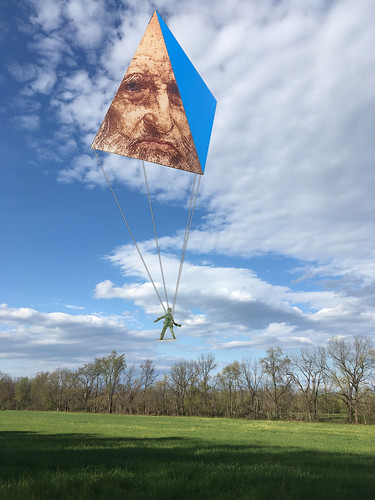
Volume XX, Issue XII: Leonardo da Vinci's Amazing Bridge Designs
The Da Vinci Bridge by A.C.E. Coop

In a matter of minutes a pile of sticks becomes a bridge! Here is Leonardo da Vinci’s design for a portable fastenerless bridge as found in his notebooks and reconstructed by students of Augusta Christian Educators Homeschool Coop.

The Golden Horn Bridge
[click to read]
Da Vinci's Forgotten Design for the Longest Bridge in the World Proves What a Genius He Was. It would have been held together by compression only. Leonardo da Vinci was truly a Renaissance man, impressing both his contemporaries and modern observers with his intricate designs that spanned many disciplines. But although he's best known for iconic works such as Mona Lisa and Last Supper, in the early 16th century, da Vinci designed a lesser-known structure: a bridge for the Ottoman Empire that would have been the longest bridge of its time. Had it been built, the bridge would have been incredibly sturdy, according to a new study. In 1502, Ottomon ruler Sultan Bayezid II requested proposals for the design of a bridge that would connect Constantinople, what's today Istanbul, to the neighboring area known as Galata. Da Vinci was among those who sent a letter to the sultan describing a bridge idea. (read more)

The Vebjørn Sand da Vinci Project built a laminated-wood parabolic-arch pedestrian bridge in Norway over European route E18 in Ås, Norway, in 2001. It was a partnership between the Norwegian Public Roads Administration and Norwegian painter and artist Vebjørn Sand, who headed the project. The resulting da Vinci Bridge, based on the Golden Horn design, is one of several installations that Sand is known for in Norway. Wikipedia
MIT Engineers Test da Vinci's Design
[read more]
In 1502 A.D., Sultan Bayezid II sent out the Renaissance equivalent of a government RFP (request for proposals), seeking a design for a bridge to connect Istanbul with its neighbor city Galata. Leonardo da Vinci, already a well-known artist and inventor, came up with a novel bridge design that he described in a letter to the Sultan and sketched in a small drawing in his notebook. He didn't get the job. But 500 years after his death, the design for what would have been the world's longest bridge span of its time intrigued researchers at MIT, who wondered how thought-through Leonardo's concept was and whether it really would have worked. (read more)
Leonardo da Vinci’s 1485 Parachute
Sometime around 1485 Leonardo da Vinci made a small sketch in Codex Atlanticus of a pyramid shaped ‘parachute’ along with the following description:

Se un uomo ha un padiglione de pannolino intasato, che sia 12 braccia per faccia e alto 12, potrà gittarsi d’ogni grande altezza senza danno di sé. (If a man has a structure made out of coated cloth 12 arms wide and 12 tall, he will be able to throw himself from any great height without hurting himself.) Don’t try this at home.
It is doubtful that da Vinci was actually able to test his device at the time. On June 26, 2000, 515 years later, British balloonist Adrian Nicholas built a parachute of wood and canvas to the artist’s specifications, dropping from a hot air balloon at 10,000 feet. He descended successfully to 2000 feet, where he used a conventional parachute to complete his descent. In 2008 Swiss adventurer Olivier Vietti-Teppa used a modified version of Leonardo’s parachute to carry him all the way to the ground.
Print out the sheets below to build your own Leonardo da Vinci Parachute!
Parachute (11” x 17”) | Instructions (8.5” x 11”) [click to view and print]
Modern Passover Miracle Thwarts Terror Attack
